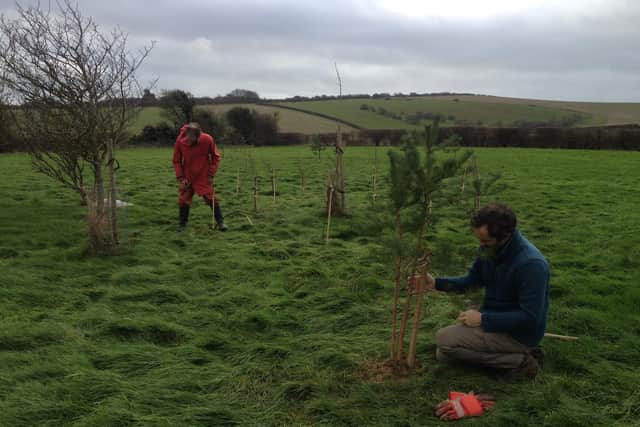Urgent appeal to save Sussex trees by replanting unwanted young birch in gardens, school fields and open spaces
This article contains affiliate links. We may earn a small commission on items purchased through this article, but that does not affect our editorial judgement.
and live on Freeview channel 276
The team from The Birch Tree Project, which covers the area from Newhaven to Worthing, is hoping to find homes for trees that are being removed from Ashdown Forest and Hesworth Common. Carol Springgay, co-founder, said: "The trees are fantastic for gardens but need to be replanted by the end of February if they are to survive."
The environmental group is urgently looking for people who can rehome the young birch trees, as they are otherwise destined to be discarded. Its game-changing partnership with Ashdown Forest in Forest Row and Hesworth Common in Fittleworth has so far seen more than 800 young trees transplanted into private gardens and public spaces. More trees are available but it is a race against time.
Advertisement
Hide AdAdvertisement
Hide AdCarol, who is also a member of Eastbrook Community Gardeners in Southwick, explained: "Once the sap starts rising in the trees from March onwards, they are unlikely to survive being moved. Ashdown Forest and Hesworth Common must thin out the number of trees to maintain the proper ecological balance of the heathland areas. None of us want the trees to go to waste and we are ready to re-home them – but we need people who would like to give a tree, or many trees, a new place to grow.”


Heathland habitats are a rare and fragile environment that support many species of birds and insects. They need to be maintained as 40 per cent woodland and 60 per cent open heath, and therefore birch and other trees have to be removed to maintain the balance.Trees lifted by the not-for-profit project will be typically from about 1m to 2.5m tall. They grow around half a metre a year and can grow to 20m or be pruned to limit size and shape. Carol said they are second only to oak in attracting a host of wildlife and these trees have local provenance – an important factor, meaning they will benefit the environment and protect the biodiversity of this area.
Environmental scientist Dr Richard Stow, co-founder, added: "We believe this is a game-changing new project, as this is not being done in this way anywhere else, no plastic, no recycled materials, no big vehicles, watching the mileage and so on. Our project is a simple way of maximising the benefits of trees that already exist but would otherwise be lost.
"And it’s only the start for us – we would like to see our towns becoming an urban forest which is great for us, our climate and for our wildlife. We want to work with other landowners who need to re-locate trees on their properties. Our vision is of a tree exchange from people who have but don’t want, to people who want but don’t have.”
Advertisement
Hide AdAdvertisement
Hide AdThe Birch Tree Project can supply trees for private gardens, public spaces, school fields, care home gardens and more. Anyone interested can email [email protected]. For more information, see The Birch Tree Project Facebook page.